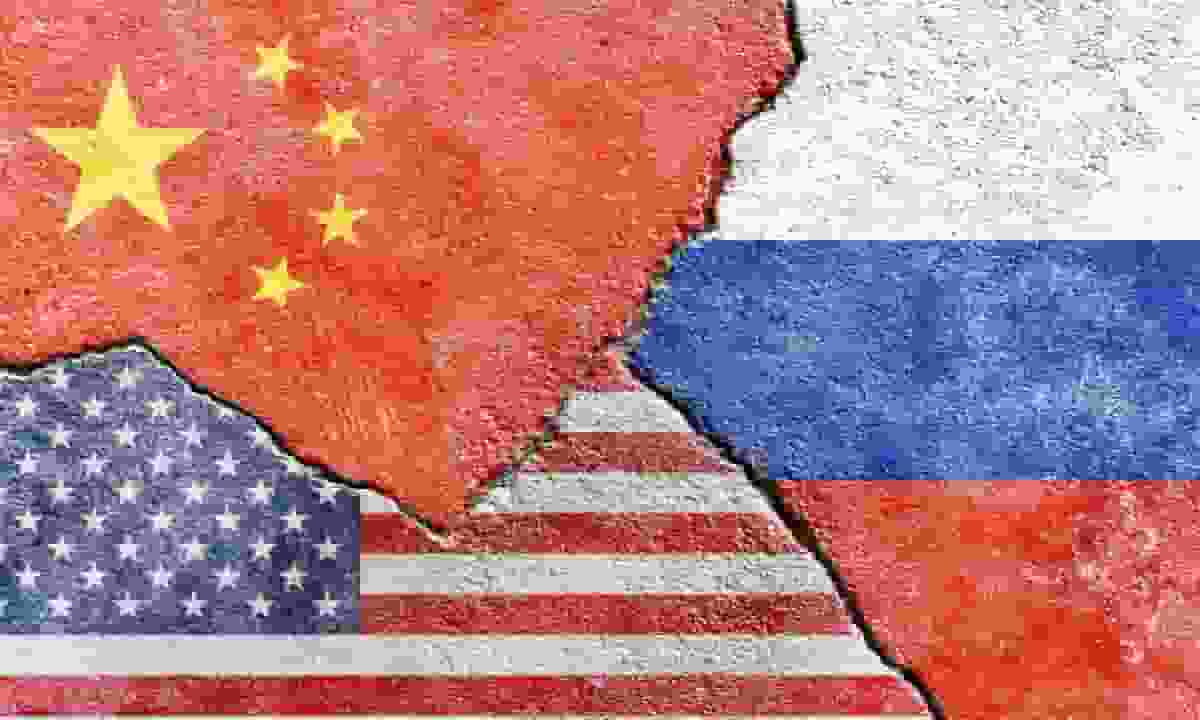In February 2022, the U.S. Ambassador to the UN issued a warning about Russia’s upcoming invasion of Ukraine, which drew condemnation from Western nations. Meanwhile, certain Middle East and North Africa countries advocated for diplomatic solutions. These countries viewed the Ukraine crisis as a chance to reconsider their ties with China and the U.S., particularly in the areas of arms, energy, and trade.

Great Power Competition in Middle East and North Africa. (Photo: SETA)
Russia’s Invasion of Ukraine and Its Impact on the Middle East and North Africa
According to The Heritage Foundation, In February 2022, U.S. Ambassador to the United Nations (UN) Linda Thomas-Greenfield issued a statement to the media, echoing months of intelligence that had been used to convince Western allies that Russia was on the verge of invading Ukraine. Just one week later, on February 24th, Russian troops crossed the border into Ukraine, initiating a multi-pronged strategy aimed at taking control of the country.
While the United States and most Western nations swiftly condemned the invasion, promising a united and decisive response, not all Western allies were on board. Many countries in the Middle East and North Africa (MENA) expressed concern but called for diplomacy and de-escalation.
With Russia’s attention focused on Ukraine, Middle East and North Africa countries recognized a unique opportunity to reassess their complex relationships with China and the United States in areas such as arms, energy, and trade.
The Middle East and North Africa (MENA) region holds strategic importance for Russia, China, and the United States due to its global crossroads location, abundant energy resources, and investment potential. Comprising 18 countries, it connects Europe, Africa, and Asia and features key maritime trade chokepoints like the Bab al-Mandab Strait, the Strait of Hormuz, and the Suez Canal.
Read Also: Courageous Ukrainian Soldier Named “Courier”: Rising To Leadership Amidst Chaos On The Battlefield
Significance of Middle East and North Africa Region in Great Power Competition
Access to these vital trade routes is crucial for projecting economic and political power in the globalized world. Additionally, the region boasts 57 percent of the world’s proven oil reserves and 41 percent of proven natural gas resources. Furthermore, it represents an untapped market with a young, tech-savvy consumer base eager for products and technology from both within and outside the Middle East and North Africa (MENA) region.
However, tapping into these resources necessitates a nuanced understanding of the region’s diversity, including varying governance models, religious and ethnic differences, and economic disparities. This complexity creates a unique geostrategic context for the United States, Russia, and China to navigate in their pursuit of influence.
Dealing with Middle East and North Africa region (MENA) requires understanding its diverse governance models, religions, ethnicities, and income levels. Historically, the U.S. and Soviet Union competed for influence in MENA, with the U.S. prevailing post-1991. However, U.S. prestige declined due to events like 9/11, enabling Russia and China to step in.
This competition is crucial for the U.S., as it risks losing global influence to China. The Middle East and North Africa region is now a key battleground in the new Cold War between the U.S. and China. Both must win over MENA nations through arms, energy, and trade to secure regional influence.
Russia’s involvement in Syria since 2015 strengthened its ties in the region, especially through arms sales. China, on the other hand, pursued strategic neutrality and institutionalized relationships through trade and investment, benefiting from Russia’s decline and U.S. setbacks in the region.
China’s increasing presence in Middle East and North Africa region poses a challenge to the U.S., as the region is a focal point in the new Cold War between the two superpowers. Winning influence in MENA will require both countries to use arms, energy, and trade as mechanisms to engage with Middle East and North Africa (MENA) countries.
Read Also: Ukraine Launches Attack On Russian Fleet As U.S. Pledges Military Support




![Tyson Foods Plant [Photo: Food Manufacturing]](https://southarkansassun.com/wp-content/uploads/2023/08/iStock_1185520857__1_.5e441daa51cca-600x337.jpg)








![Silverado Senior Living Management Inc. [Photo: Los Angeles Times]](https://southarkansassun.com/wp-content/uploads/2023/10/download-6-4-600x337.jpg)

![China's Wuhan Institute of Virology [Photo: Nature]](https://southarkansassun.com/wp-content/uploads/2023/09/d41586-021-01529-3_19239608-600x337.jpg)















